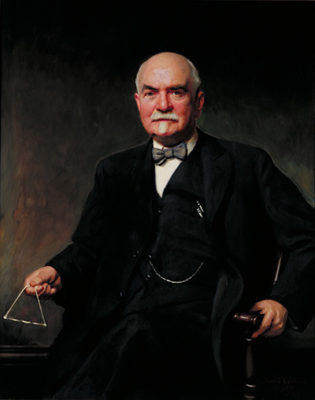Our Division
The Division of Gynecologic Pathology is a separate but integral part of the Departments of Gynecology/ Obstetrics and Pathology. There are five full-time faculty members whose activities include clinical practice, teaching, and research. The clinical activities of the members of the Division consist of rendering a histologic (pathologic) diagnosis on all surgical specimens removed from the female genital tract at the Johns Hopkins Hospital and outpatient clinics. In addition, the Division provides diagnostic expertise for pathologists throughout the United States and abroad who submit cases for consultation. Members of the Division teach medical students, residents, and fellows. The latter are physicians who have completed their residency training and who have decided to subspecialize in the field of gynecologic pathology. Members of the Division are engaged in a variety of research areas, primarily ovarian cancer, cervical cancer and papillomavirus infection, uterine cancer and trophoblastic tumors (tumors that develop from the placenta). The main focus of the ovarian cancer research program is aimed at early detection. In the areas of cervical cancer and papillomavirus infection, the focus of interest is in the immunology and vaccine development. Although not directly applicable, some of the advances in understanding that are being developed in this area have the potential to influence the treatment of ovarian cancer as well.

History
The Gynecologic Pathology Laboratory at Johns Hopkins Hospital was established in 1893 under the direction of Dr. Thomas Cullen, who was a resident in gynecology under Dr. Howard Kelly, Chief of Gynecology, and Dr. William Welch, Chief of the Department of Pathology. Dr. Cullen was first in this country to examine tissues removed in the operating room, using the microscope to make diagnoses. He thus pioneered what was to become the field of gynecologic pathology in the United States. During his tenure as Chief of the Laboratory and then Chairman of the Department of Gynecology, Dr. Cullen wrote several definitive textbooks in various areas of gynecologic pathology. When Dr. Cullen retired, the Laboratory came under the direction of Dr. Emil Novak, a gynecologist who was to achieve an international reputation for his work in gynecologic pathology. The textbook that he wrote served as the standard for nearly three decades. In 1952, Dr. Novak's pupil, Dr. J. Donald Woodruff, a consummate gynecologic surgeon with extensive training in pathology, assumed the Directorship of the Pathology Laboratory, remaining in that position until 1989.

TeLinde Endowment
In 1991 upon the death of Dr. Richard W. TeLinde who was the Chairman of the Department of Gynecology from 1939 to 1960, an endowed chair in gynecologic pathology was established. This is the only one of its kind in the United States. Dr. Woodruff was the first to hold this chair. The current Richard W. TeLinde Distinguished Professor is Ie-Ming Shih, M.D., Ph.D.. Dr. Shih has his primary appointment in the Department of Gynecology and Obstetrics and a secondary appointment in the Department of Pathology and was endowed with this professorship in 2014, succeeding Dr. Robert J. Kurman. When the endowment was created, it was envisioned that the annual proceeds that were generated would be used to fund pilot research projects. Once these projects generated preliminary data, investigators could then apply for extramural sources of funding. This has turned out to be a highly successful endeavor, as demonstrated by the fact that since its inception, extramural funding in the Division, largely from grants from the National Institutes of Health, has nearly quadrupled. Thus, for every dollar from the Endowment, four dollars have come into the Division from federally funded research grants. This is a tribute to the accomplishments of the investigators in the Division and to the vision of Dr. TeLinde who provided the funding for the endowment.
If you are interested in supporting the gynecologic division, please click the button below and visit the Department of Pathology Giving page.

